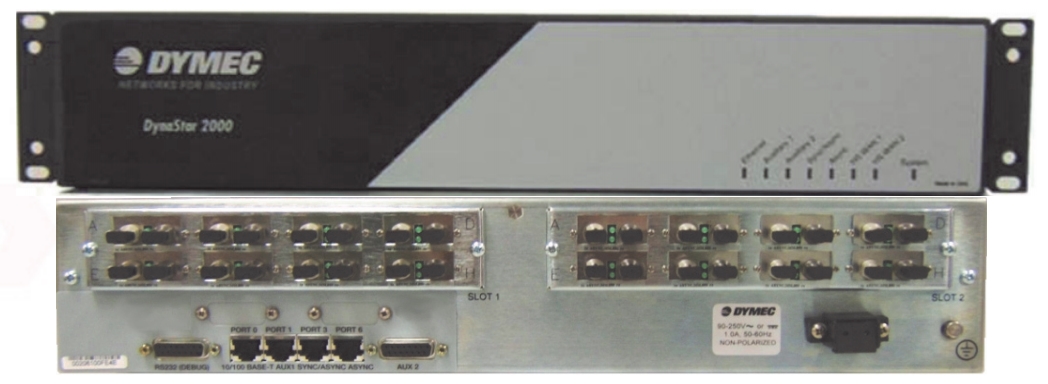
 Datasheet
Datasheet
 Install Guide
Install Guide
 User guide
User guide
FEATURES
- Hardened for harsh environments
- Meets IEEE 1613 / IEC 61850-3 requirements for power utility substations
- Five networking functions integrated in one product
- 16 serial ports, 300 bps to 230.4 kbps
- Powerful built-In protocol analyser
- No fans or moving parts, non-vented sealed steel enclosure
- AC & DC power options
Supporting 16 Serial, and Ethernet interfaces with either eight 10/100 TX, or six 10/100 TX with two 100 FX and two GigE ports, and dual T1/E1 or DDS WAN interfaces. The DynaStar 2000 Industrial Frame Router (IFR) delivers reliable and secure WAN connectivity to multiple industrial automation devices at your site.
The DynaStar DS2000-IFR is the only integrated WAN device specifically designed for industrial monitoring and control networks operating in harsh environments. Combining 5 different networking functions (terminal server, Ethernet switch, IP router, frame relay access device and DSU/CSU), the DS2000-IFR is the only device available that can replace multiple WAN communication devices on your network, increasing operational reliability and significantly reducing hardware and deployment costs.
A “Hardened” product, the DS2000-IFR is built to thrive in the harshest environments and conditions, including: extreme temperatures, high humidity, power surges, ground potential rise, EMI/RFI interference as well as other tough environmental conditions often found in industrial and remote process sites. The DS2000-IFR supports multiple application and device interfaces including legacy bit-oriented protocols, Async/serial protocols and IP/Ethernet. The DS2000- IFR is ideally suited to enable IP conversion strategies for SCADA traffic, and other non-IP based process control, supervisory or monitoring communications traffic. The DynaStar 2000 IFR uses SCADA Frame Forwarding technology for low overhead, high performance support of delay sensitive serial SCADA applications.
The DS2000-IFR consolidates data from multiple devices on to a common platform, then on to a wide area network connection. The primary WAN interface is based on frame relay over private or carrier services. The platform can also function locally as both an Ethernet switch and an Async-TCP/IP terminal server.